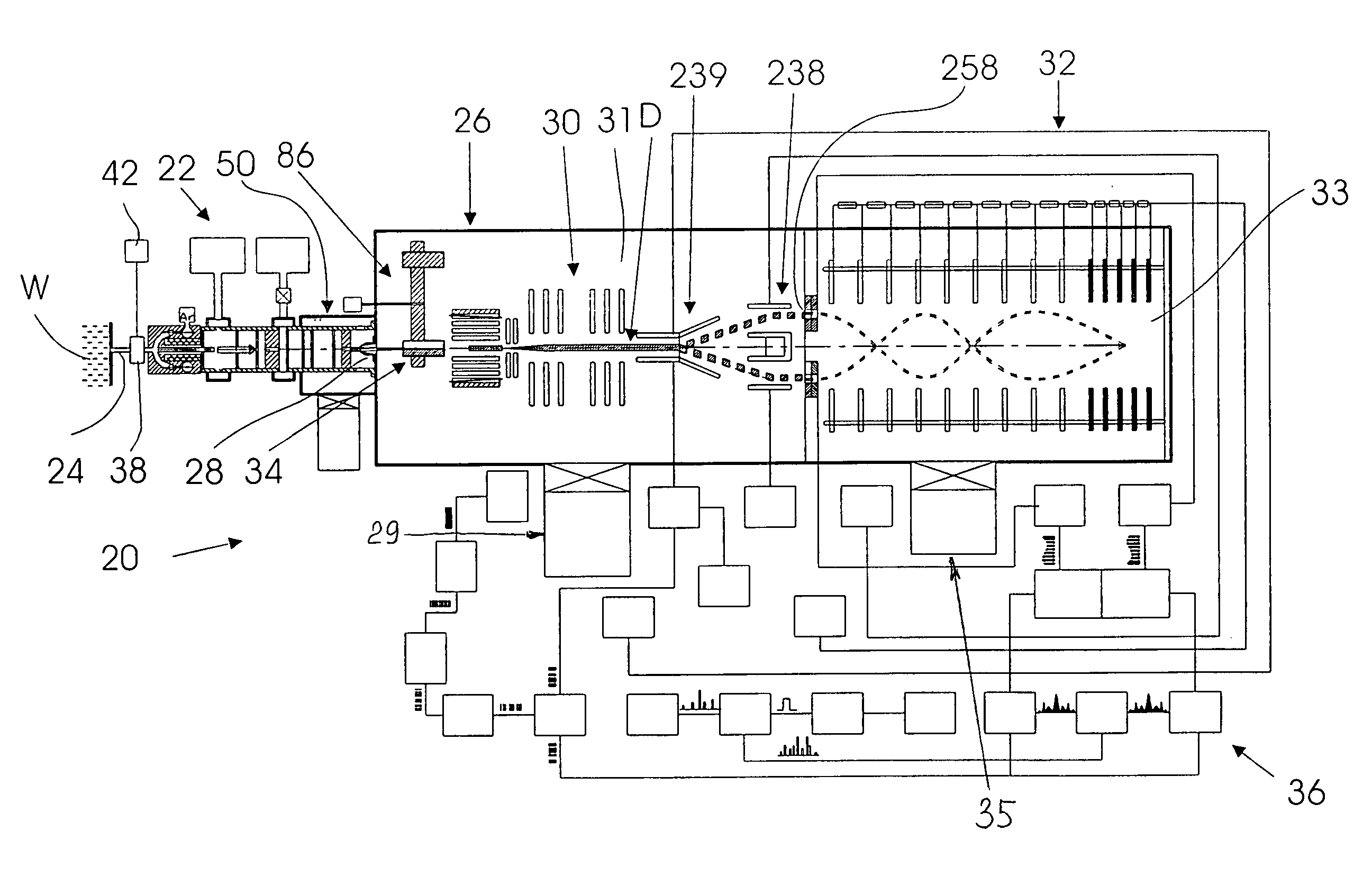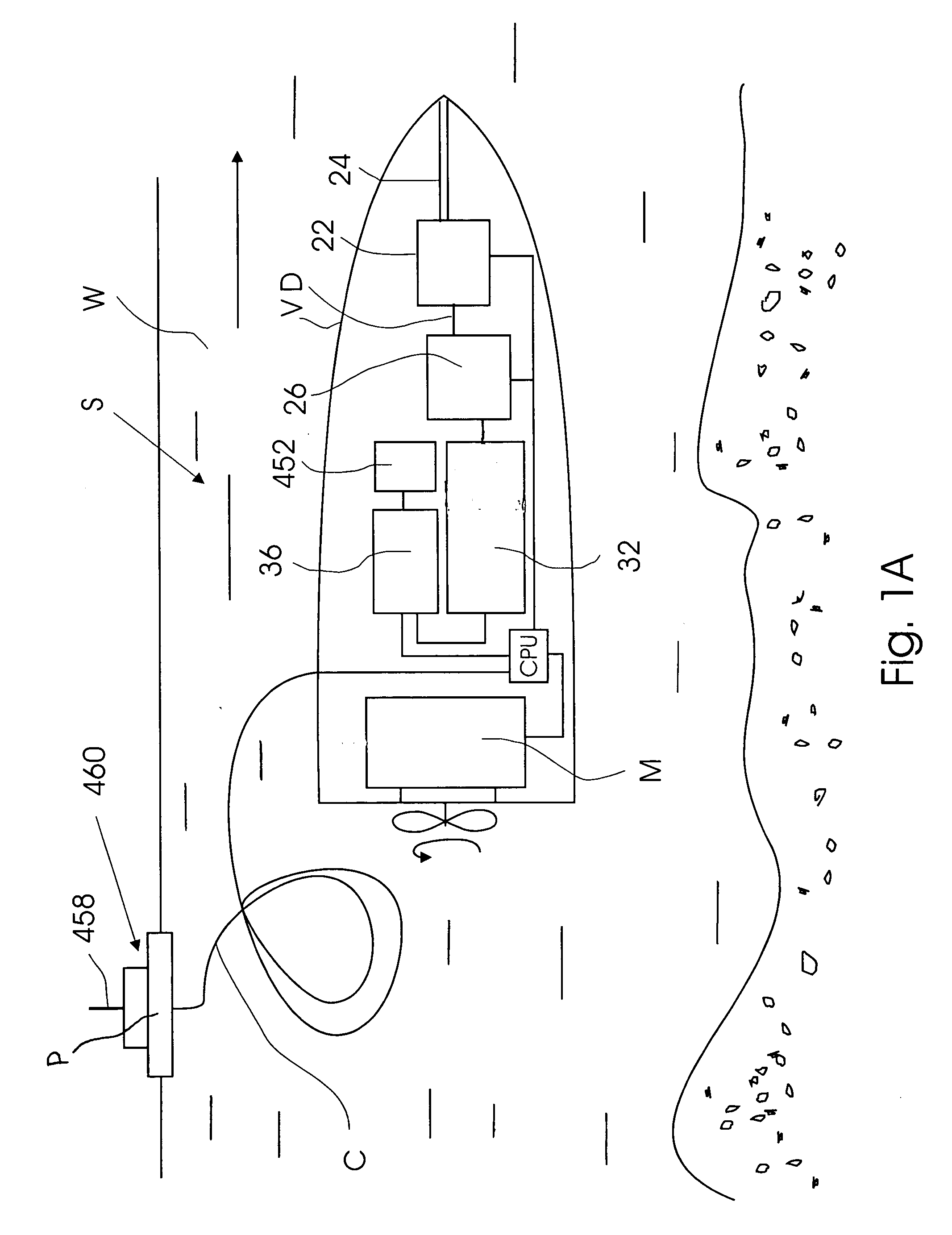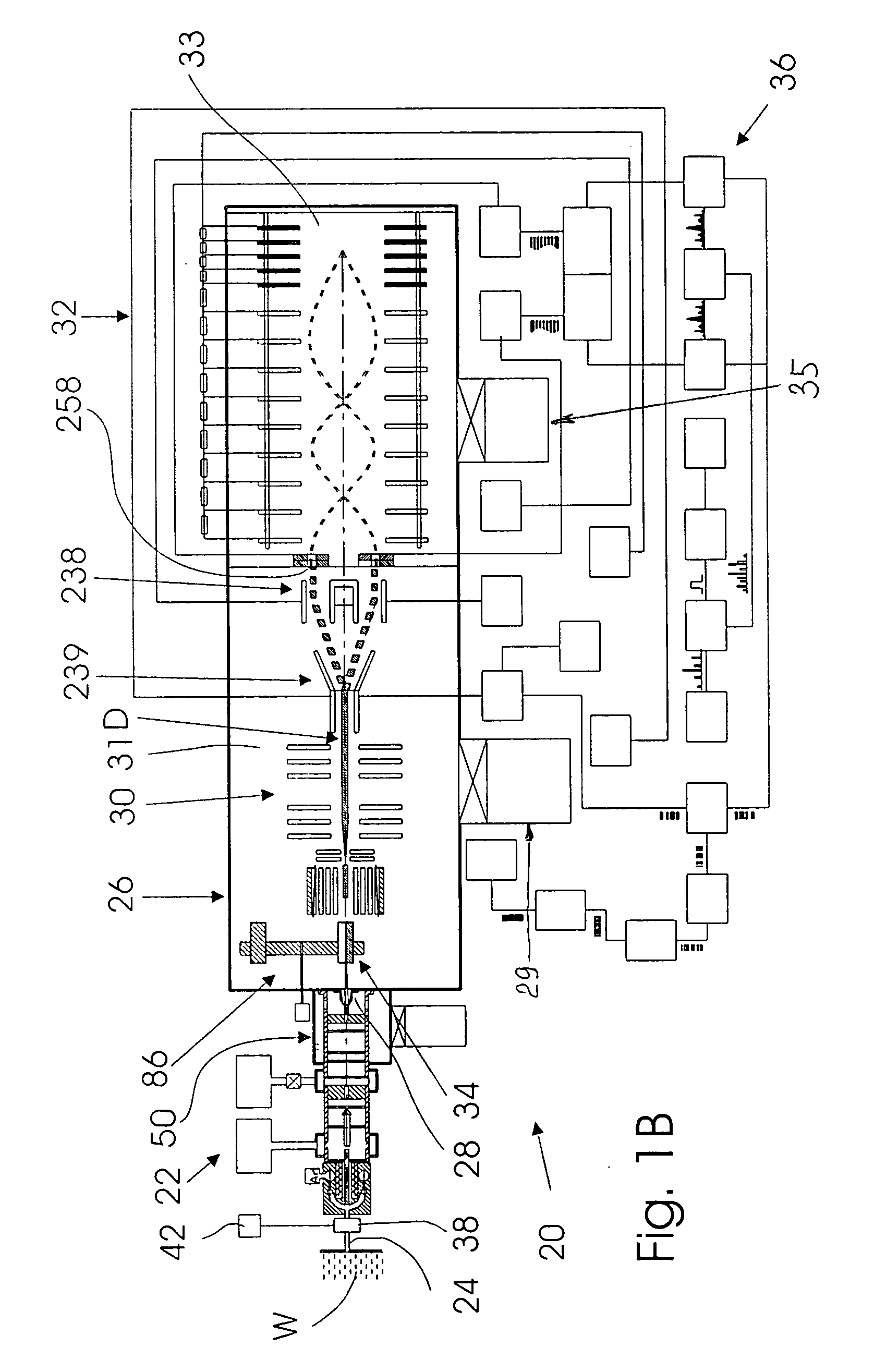Mass spectrometry system for continuous control of environment
a mass spectrometry and environment technology, applied in the field of environmental control, can solve the problems of mass spectrometers used in these systems that cannot operate with a high-duty cycle, cycle does not work, mass spectrometers cannot analyze the medium, etc., and achieves accurate detection of collision time, high-resolution capacity, and reduced scattering of points of return.
- Summary
- Abstract
- Description
- Claims
- Application Information
AI Technical Summary
Benefits of technology
Problems solved by technology
Method used
Image
Examples
Embodiment Construction
[0066]FIG. 1A is a schematic general view of main components of the system of the invention. The system, which in general is designated by symbol S, consists of a vehicle V, which in the illustrated embodiment is shown as an underwater vehicle, e.g., a submarine platform that contains in a hermetically sealed part thereof the following units arranged in sequence starting from the front end of the vehicle: a sample preparation unit: vehicle V, which in the illustrated embodiment is shown as an underwater vehicle, e.g., a submarine platform that contains in ia hermetically sealed part thereof the following units arranged in sequence starting from the front end of the vehicle: a sample preparation unit: vehicle V, which in the illustrated embodiment is shown as an underwater vehicle, e.g., a torpedo platform that contains in a hermetically sealed part thereof the following units arranged in sequence starting from the front end of the vehicle: a sample preparation unit: 1) a sampling de...
PUM
 Login to View More
Login to View More Abstract
Description
Claims
Application Information
 Login to View More
Login to View More - R&D
- Intellectual Property
- Life Sciences
- Materials
- Tech Scout
- Unparalleled Data Quality
- Higher Quality Content
- 60% Fewer Hallucinations
Browse by: Latest US Patents, China's latest patents, Technical Efficacy Thesaurus, Application Domain, Technology Topic, Popular Technical Reports.
© 2025 PatSnap. All rights reserved.Legal|Privacy policy|Modern Slavery Act Transparency Statement|Sitemap|About US| Contact US: help@patsnap.com



